Giant road bike range: details, pricing and specifications
Everything you need to know about the Giant road bike range; including TT/Tri, cyclocross and gravel bikes
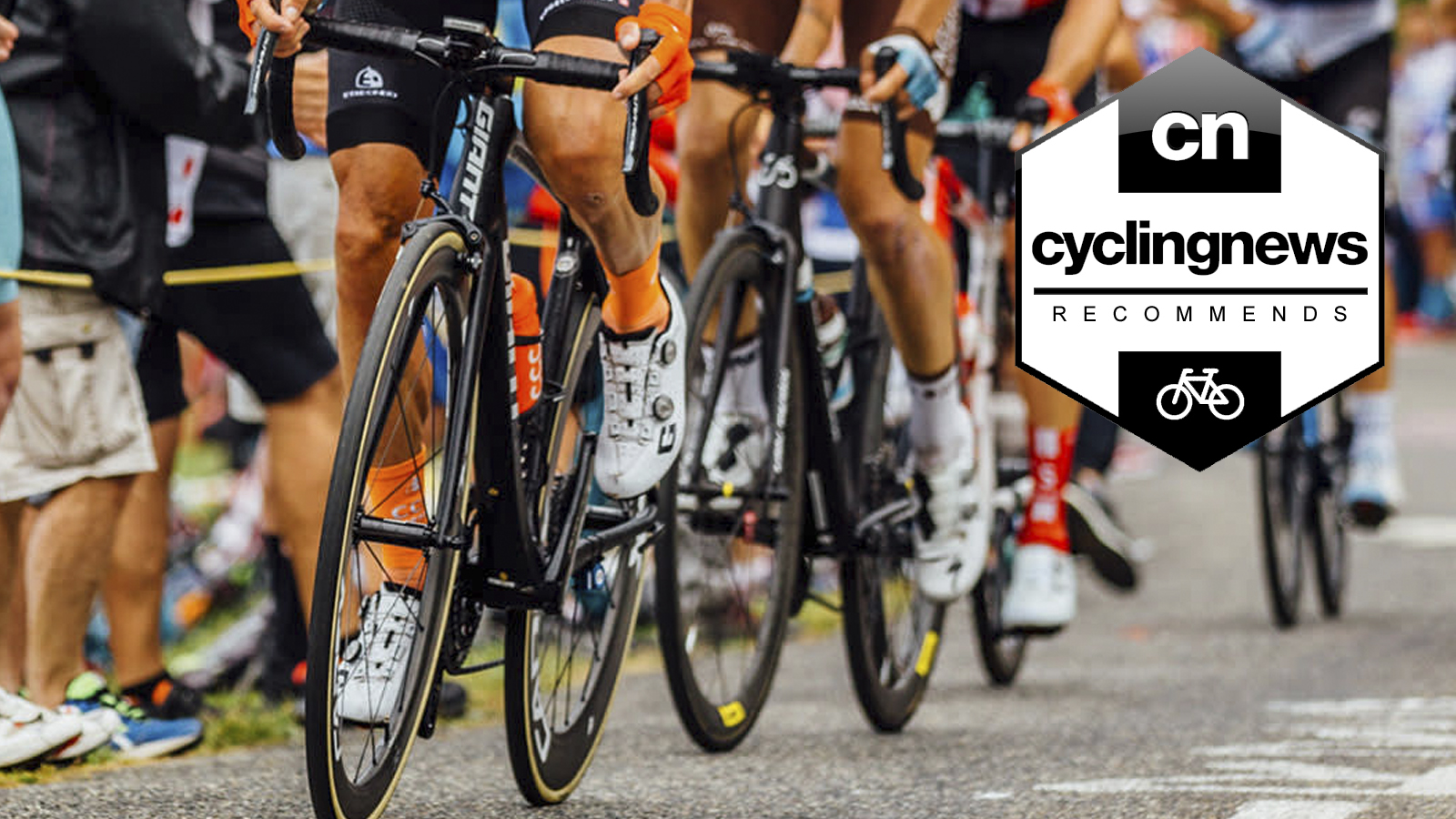
Giant is more than a household name, it's an industry powerhouse that not only sells a huge number of bikes to consumers but has assembled bikes for many of the other major bike brands.
It's unsurprising then, that Giant is the largest bike manufacturer in the world and often at the forefront of bike technology, pioneering materials and manufacturing techniques. Giant has consistently released among the best road, mountain and lifestyle bikes available since they were founded back in 1972.
Giant is well known for its almost unrivalled value for money. By developing its own OEM products it can minimise costs and assure its frames and components work flawlessly. Almost all Giant’s bikes come exclusively with Giant's own-brand finishing kit, wheels and tyres.
For its women's models, Giant offers the Liv brand. While this guide doesn't feature any of these bikes, the Liv range shares much of Giant’s technology and performance but with female-specific geometry and components.
Scroll down to see Cyclingnews' roundup of Giant’s road, TT/Tri, gravel and cyclocross bikes available to buy for 2020.
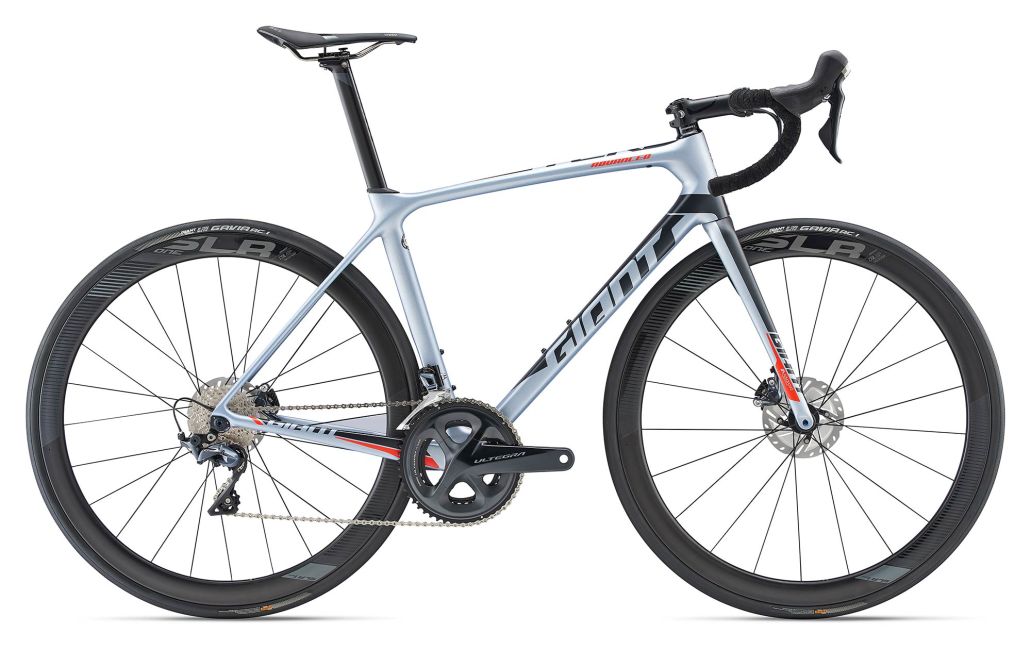
Giant TCR
Specifications
Reasons to buy
Reasons to avoid
When the TCR (Total Compact Road) was introduced in the 90s, Giant revolutionised the design of road bikes. Using sloping top tubes and smaller triangles road bikes became lighter, stiffer and able to offer a better bike-fit. The compact frame was the vision of bike designer Mike Burrows and his design now influences every new road bike available. Giant’s TCR range continues to be at the forefront of performance road bikes.
The TCR Advanced SL is Giant's lightest road frameset and is designed to bring the ultimate in stiffness to weight ratio using its own advanced carbon manufacturing processes. An OverDrive2 headset, MegaDrive down/top tube and a PowerCore bottom bracket strengthen and stiffen the frame to improve steering precision and power transfer. The integrated D-Fuse Variant seatpost uses a refined shape that Giant claims improves compliance and gives the frame a clean finish.
The rim brake version of the TCR Advanced SL comes equipped with Shimano Ultegra while the Disc versions use SRAM Force or Red eTap AXS. Own-brand equipment usually signifies areas for future upgrades but the TCR Advanced SL rolls on Giant’s SLR-1 42mm composite wheels which are proven performers. The TCR Advanced SL 0 Disc gets an ultra-premium CADEX upgrade.
All TCR Advanced SL models come equipped with dual-sided power meters and Giant’s chainstay-integrated RideSense sensor, which sends speed and cadence data via Bluetooth or ANT+ to compatible GPS devices.
The TCR Advanced Pro has all the stiffness advantages of using the oversized tubes, headset and bottom bracket area that's also seen on the TCR Advanced SL, but it lacks the Advance SL Grade carbon. The proprietary D-Fuse Variant seatpost is no longer integrated with the frame, instead, it uses a hidden seat collar system.
The TCR Advanced Pro range also shares the same finishing kit and wheels with upgrades to the drivetrains as the models move up in price. Every model gets Giant’s RideSense and all but the lowest Advanced Pro 2 and Advanced Pro 3 Disc come equipped with power meters.
At the budget end, Giant's TCR Advanced starts at £1,399 and offers an entry-level to Giant’s carbon road bikes. Despite the lower cost, the TCR Advanced uses the same geometry and Advance-Grade composite as the TCR Advanced Pro. PowerCore and MegaDrive technology retain stiffness although the older Overdrive system is used rather than the larger OverDrive2.
Shimano features throughout the TCR Advanced range starting with Tiagra and topping out with Ultegra. You will need your own sensors for speed and cadence though as the TCR Advanced doesn’t come with Giant’s built-in RideSense.
All TCR Advanced models come equipped with Giants Tubeless System. By using a complete wheel, tyre and rim tape system Giant can guarantee compatibility, ease of setup and reliability.
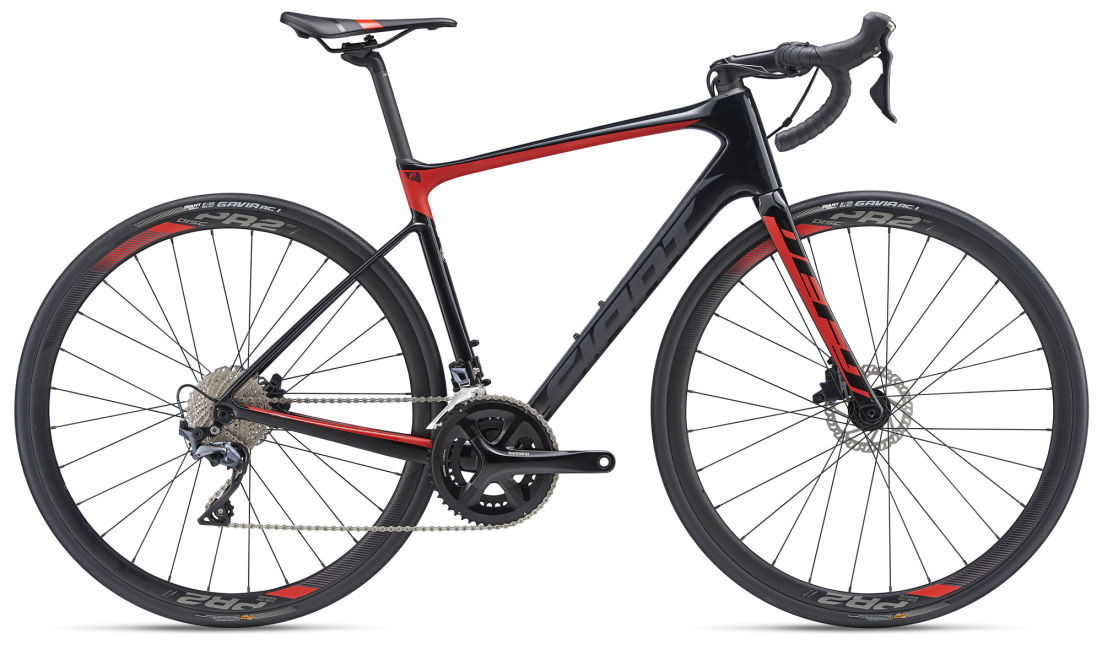
Giant Defy
Specifications
Reasons to buy
Reasons to avoid
The Giant Defy uses the stiffness and lightweight technology from Giant's fast TCR and Propel range but is infused with compliance and endurance geometry that gives it the ability to be ridden all day.
Giant made some tweaks to the Defy in 2019 by introducing flat mount disc brakes, 12mm thru-axles and a new fork. The bottom bracket was also dropped by 5mm and wheelbase lengthened by 3mm to improve handling and offer a generous 35mm tyre clearance.
Designed for long-distance comfort, Giant's D-Fuse technology is featured heavily throughout the Defy Advanced Pro range. D-Fuse uses 'D' shaped tubes giving the handlebar and seatpost more flex to help absorb vibrations from rough roads, whilst retaining upward stiffness when climbing and sprinting. The Contact SLR D-Fuse handlebars offer a claimed 6 per cent weight saving over Giant’s equivalent Contact SLR bar and the Contact SL Stealth stem manages all the cables by cleanly routing them from the handlebar into the side of the stem.
The Defy Advanced Pro range starts at £2,899 with Shimano 105 and comes equipped with RideSense speed and cadence. Only the Defy Advanced Pro 0 RED comes equipped with a power meter.
The Defy Advanced shares a similar frame to the Pro model, featuring PowerCore for efficient power transfer but using Giant's OverDrive rather than OverDrive2. While the RideSense sensor or Contact SL Stealth stem isn’t featured, the Defy Advanced does get Giant's D-Fuse Contact SL bar and seatpost to complement the compliance from the frame.
Giant's P-R2 Disc wheelset features throughout the Defy Advanced range as do Shimano drivetrains which start with the Tiagra equipped Defy Advanced 3 for £1,599.
All Defy Advanced models come stock with folding 32mm Giant Gavia Fondo 1 tyres that use Giant's Tubeless System for simple setup and lower rolling resistance.
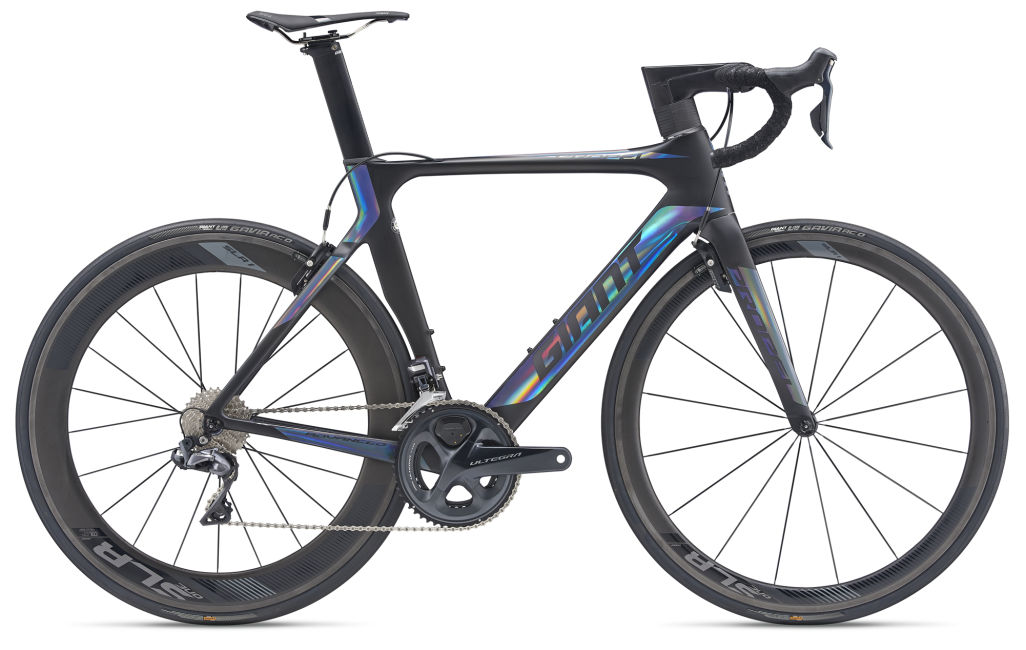
Giant Propel
Specifications
Reasons to buy
Reasons to avoid
The Giant Propel is built for speed on the road. Giant created the Propel's tube shapes by using Computational Fluid Dynamics (CFD) and wind tunnel testing for slippery aerodynamics that work in a range of yaw angles. Giant uses its own Modified Monocoque Construction method to mould the front triangle as a single piece to save weight. The truncated aero tubes combined with OverDrive2 steering system and PowerCore bottom bracket create a stiff sprinting platform which has been ridden to success by the CCC Pro Team.
Both rim and disc brake options are available for the Propel Advanced and Advanced Pro, however the Propel Advanced SL is only available as a disc brake option. The full Propel range sees the advantages of Giant’s built-in RideSense and Giant continues to push road tubeless with all Propel models coming with Giant’s simple Tubeless System.
The Propel Advanced SL is built from Giant's highest performing Advance SL carbon and features a Vector integrated seatpost which further improves aerodynamics and saves 45g. A Contact SLR Aero bar and stem offer further drag reduction thanks to the airfoil shape and fully internal cable system.
Both Propel SL models feature SRAM eTap drivetrains with Quarq Zero power meters. The wheels come from either Giant’s SLR 1 Aero or CADEX stock with a depth of 42mm on the front for better control in windy conditions and 65mm at the rear.
The Giant Propel Advanced Pro has all the same frame features as the Propel Advance SL but has a downgrade in carbon quality and a non-integrated Vector seatpost. Other than different levels of drivetrain components, the only difference between all the Propel Advanced Pro range is that the disc versions use the tidier Giant Contact SLR Aero stem. All but the Propel Advanced Pro 2 and Pro 1 Disc are specced with either Giant’s Power Pro or a Quarq DZero power meter.
The cheapest Propel Advance (not available in the US or Australia) offers an entry-level point for aero road bikes. Filtering down the tech from the Pro and SL models, the budget Advanced still benefits from Giant’s Advance-Grade carbon, Aerosystem Shaping Technology and a Vector seatpost. Both brake versions come dressed with Shimano’s 105 and Ultegra groupset however the disc version gets an aero upgrade with Giant’s Contact SL Aero cockpit.
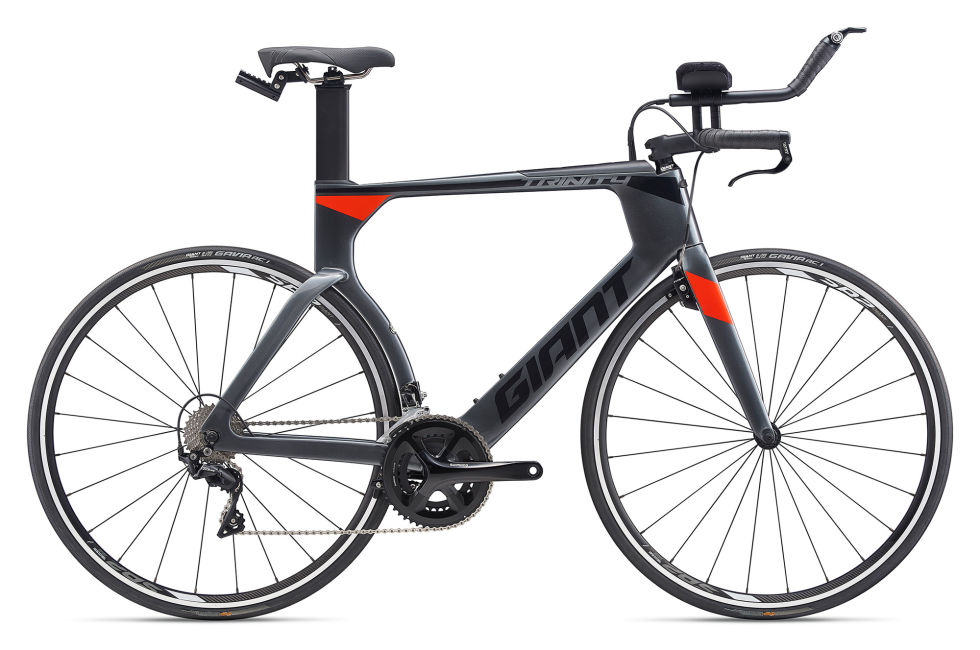
Giant Trinity
Specifications
Reasons to buy
Reasons to avoid
Designed primarily for triathlons, Giant’s Trinity range can also be made UCI legal for time trialling. Computational Fluid and dynamic wind-tunnel testing has created a striking looking bike that specialises in cutting through the air. This testing has been extended to the AeroVault storage system, for nutrition and hydration while riding, which Giant claims improve the aerodynamic performance of the bike.
The single-factory, complete build of the Trinity Advance Pro is offered in a somewhat low spec that will favour those looking to make future upgrades. Drive is handled by Shimano’s mechanical Ultegra and paired with a Giant Power Pro power meter. The wheels are Giant’s basic P-A2 wheelset and will likely be at the top of the future upgrade list.
Those looking for a UCI legal time trial bike will need to build their own as Giant offers the TT version of the Trinity Advanced Pro in a frameset only option. The TT specific Advanced Pro frameset includes a UCI legal fork and base bar with an AeroVault downtube water bottle replacing the upfront AeroVault system.
The Trinity comes in a budget option retailing for £1,899. While it shares the same carbon quality and AeroVault integration options with the Pro model, it uses a standard stem/steerer setup and doesn’t feature the Power Pro sensor. The drivetrain is a mixture of Shimano 105 and Shimano non-series components and uses Giant’s budget SR-2 wheels.
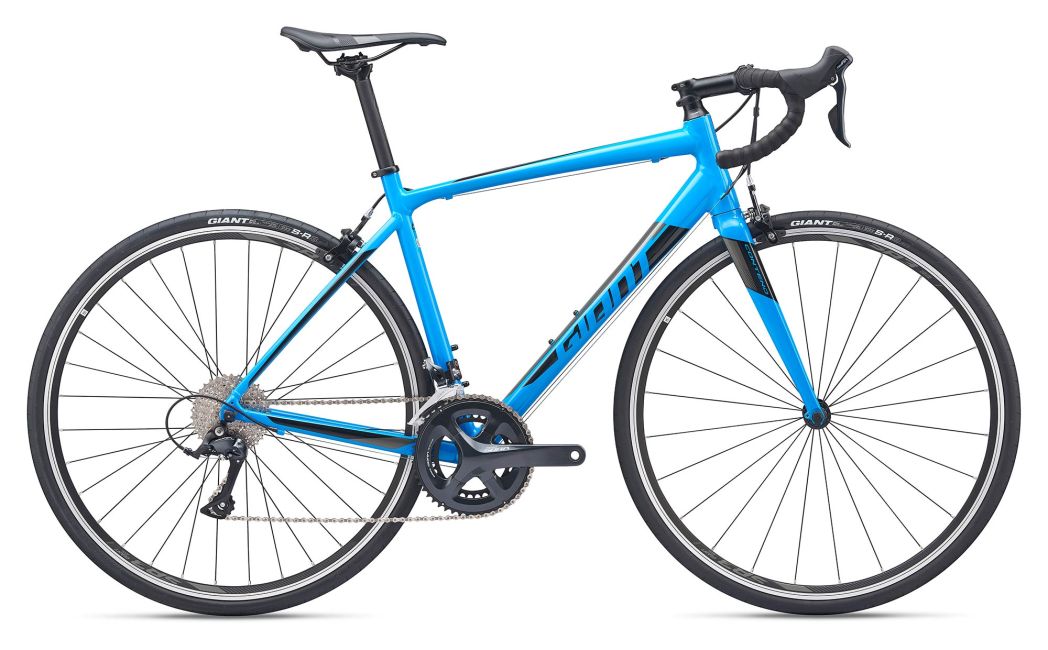
Giant Contend
Specifications
Reasons to buy
Reasons to avoid
Giant has always offered some unbeatable value for money, thanks largely to its huge economy of scale, and the Contend range is a perfect example. Take the Contend SL 1 for example, it’s a 105-specced road bike for under a grand and easily a contender as the best bike available within the Cycle to Work budget.
The compact, Contend frame is made from Giant’s ALUXX aluminium which is well finished with internal cable routing, mudguard mounts and Giant’s D-Fuse seatpost for extra compliance. Incredibly, all models are treated to a full Advance-Grade Composite carbon fork with an OverDrive steerer for precision cornering.
The Contend SL uses Giant’s premium ALUXX SL aluminium to offer a lighter and more compliant ride which is paired with the same carbon D-Fuse post from the TCR range. Available in both disc and rim brake option, they are specced with Tubeless 28mm tyres and the disc versions have space for up to 32mm.
Finishing kit and wheels are all Giant branded and Shimano 105 or Tiagra group sets ensure reliable performance over many miles.
The Contend AR caters for those that are a little more adventurous. Without the restrictions of rim brakes, tyre clearance has been plumped up to 38mm (32mm as standard) to handle the roughest roads and even a little gravel or towpath action. Component wise the Contend AR mostly mirrors the SL range with the top flight Contend AR 1 getting a couple of extra goodies in the form of 105 brakes and a Giant D-Fuse SL handlebar. Giant also offers a Shimano Sora equipped Contend 3 at £949.
The basic Contend models make a convincing option for those who want a faithful commuter bike or want to hit the road on a budget. Shimano’s Sora and Claris drivetrain will function with little fuss as will the stock Giant S-R3 wheels and finishing kit. Giant fit both Contends with 28’s but a 32mm tyre will fit if you wish extra protection from rough roads or cobbles.
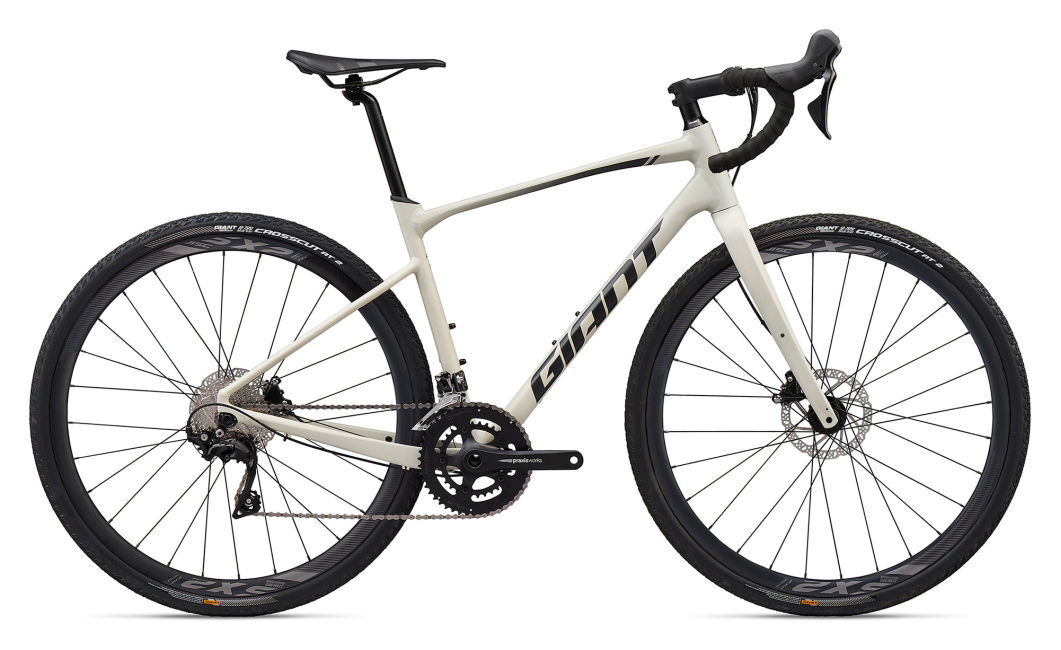
Giant Revolt
Specifications
Reasons to buy
Reasons to avoid
The Revolt may only be in its second year but seems to be plenty at home already, racing on gravel roads and tracks at events like the Dirty Kanza and the Gravel Worlds. It’s available in carbon and aluminium with both materials taking advantage of Giant’s OverDrive, MegaDrive and PowerCore engineering to deliver a stiff and eager peddling platform. D-Fuse features heavily as well, to bring compliance to a bike that will likely see a lot of rough terrain.
Geometry is right on the current endurance gravel trends with a 71 degree head angle, 73 degree seat angle, a long wheelbase and short chainstays. Tyre clearance offered is plenty adequate at 45mm and Giant state that the Revolt is compatible with 650b wheels although they don’t give a max tyre size. Three bottle cage mounts, internal routing and downtube frame protection make up the finishing touches.
At the premium end, the Giant Revolt Pro offers a desirable collection of SRAM Force eTap 12sp drivetrain and brakes, D-Fuse finishing kit and some tasty Giant SLR-1 carbon wheels. The tyres aren’t the expected Giant offering but Maxxis Velocita 40mm tubeless tyres instead. While wickedly fast on hardback surfaces they will need to be swapped out for something grippier in muddy or rocky conditions.
The Revolt Advanced gets the same Advanced-Grade Composite carbon frame and OverDrive fork as the Pro model, but with a wallet-friendlier component list. The Revolt Advanced 0 gets treated with carbon Praxis cranks, Shimano Ultegra drivetrain and Giant’s carbon CXR-1 wheels with Maxxis Velocity 40mm tyres. The Revolt Advanced 2 comes with a Shimano 105 groupset and Praxis Alba crankset. Finally, the Revolt Advanced 3 features Shimano Tiagra with an FSA crankset. Both the Advanced 2 and 3 use Giant’s S-X2 Disc wheelset and are finished with Giant’s Contact XR D-Fuse flared drop bar and carbon D-Fuse seatpost.
At the workhorse end, the ALUXX Grade aluminium Giant Revolts get a full carbon fork and, all be it alloy, D-Fuse bar and seatpost. Drivetrains are all from Shimano although only the Revolt 0 gets a Praxis crank and Shimano brakes. The same Giant S-X2 Disc wheelset as the Advanced 2 and 3 models are used throughout.
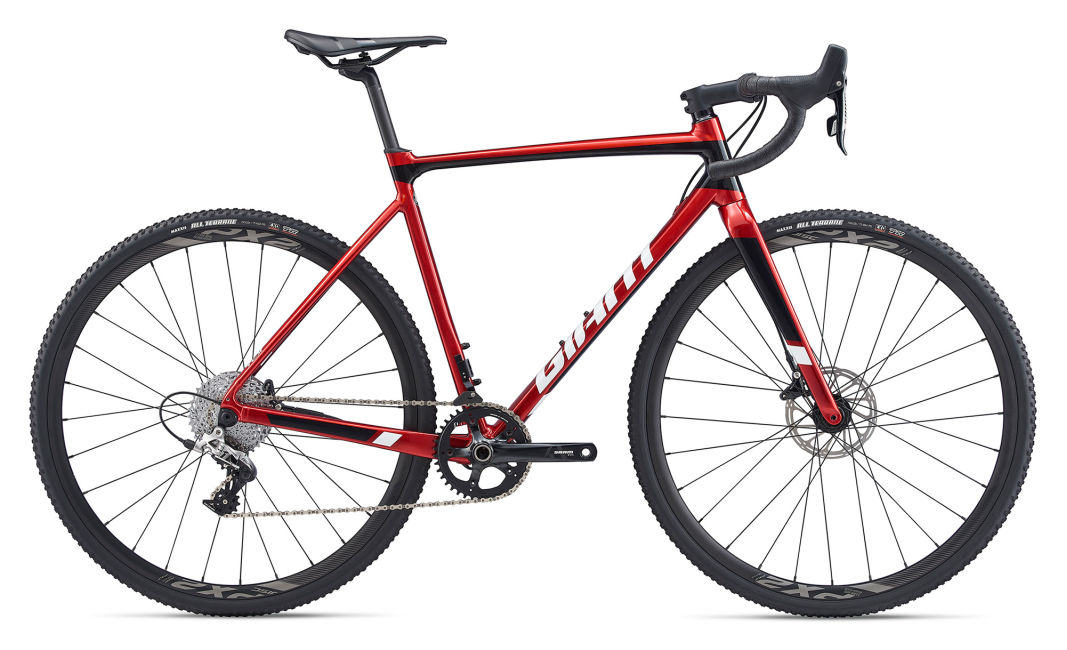
Giant TCX
Specifications
Reasons to buy
Reasons to avoid
Giant’s TCX cyclocross bikes have been around for a long time and seen their fair share of podium finishes. Giant has kept the same race-focused steep head angles, short chainstays and high bottom bracket height from the previous year's bikes. D-Fuse technology, which is featured on most Giant bikes, was originally developed for the TCX range. All the TCX models come with a carbon D-Fuse post, offering more deflection from impacts to aid seated peddling over rough terrain.
The TCX Advanced Pro 2 is Giant’s cyclo-cross dedicated race bike. Advance-Grade carbon and aggressive geometry assure a snappy bike ready to perform, whether sprinting or cornering. The TCX Advanced Pro comes with a SRAM Rival 1x groupset, a Giant P-X2 Disc wheelset with Maxxis All-Terrene 33mm tubeless tyres.
The ALUXX SLR-Grade aluminium TCX SLR offers a little extra versatility over the race-specific TCX Advanced Pro 2 with a slacker head angle and longer wheelbase to give better stability, rather than pin-sharp cornering, plus hidden rack mounts to increase practicality. The TCX SLR 1 has the same spec as its carbon cousin while the TCX SLR 2 comes with SRAM Apex 1.
Get The Leadout Newsletter
The latest race content, interviews, features, reviews and expert buying guides, direct to your inbox!
Graham has been part of the Cyclingnews team since January 2020. He has mountain biking at his core and can mostly be found bikepacking around Scotland or exploring the steep trails around the Tweed Valley. Not afraid of a challenge, Graham has gained a reputation for riding fixed gear bikes both too far and often in inappropriate places.